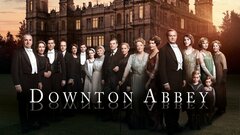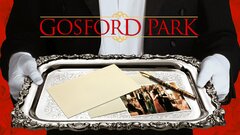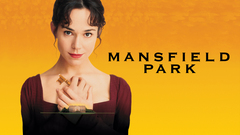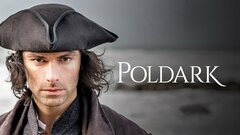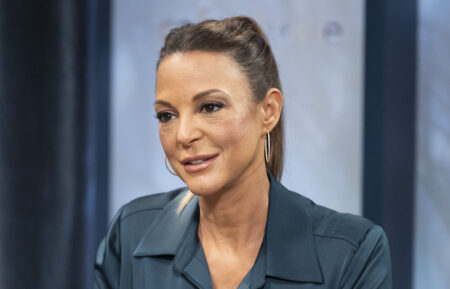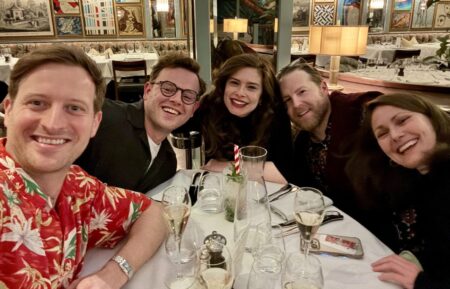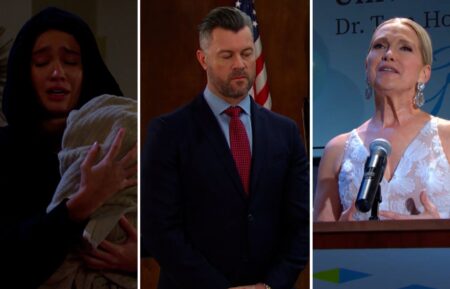10 Real English Estates Seen in ‘Saltburn,’ ‘Fool Me Once’ & More TV Shows & Movies
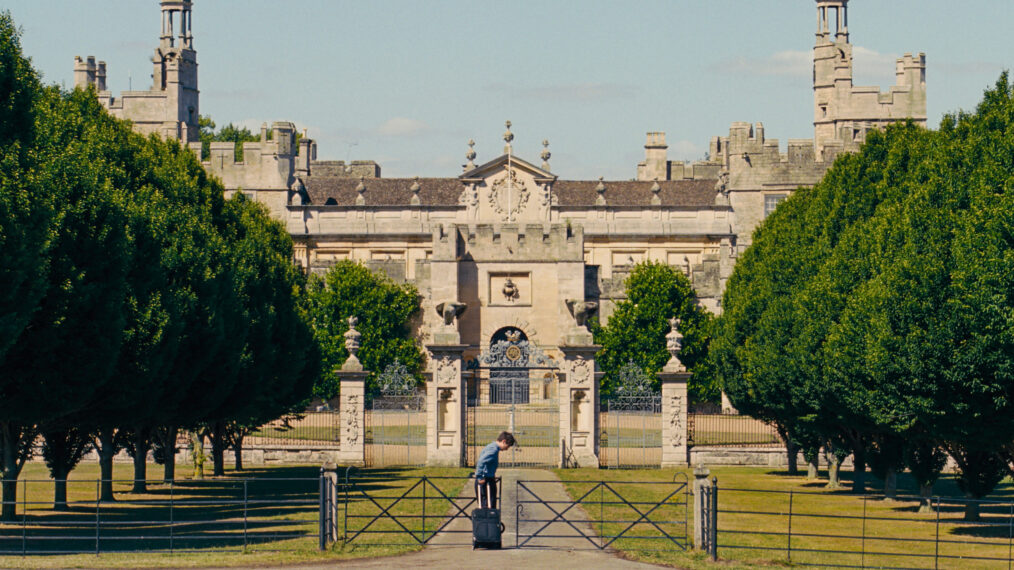
If you, too, want to dance nude through the halls of a 14th-century English mansion like Saltburn’s Oliver Quick (Barry Keoghan), you’ll need a few quid.
Experts at Agent Advice recently valued the Drayton House property — the Northamptonshire country house that played the Saltburn estate in the psychological thriller — at £42.5 million ($54 million).
“Saltburn has been the most talked-about film of the last few months, with fans showing a particular interest in the Cattons’ titular estate,” Agent Advice co-founder Chris Heller said in a statement. “This valuation sheds some light on the volume of wealth displayed in the film, putting an even greater emphasis on the absurdity of wealth Emerald Fennell so avidly outlines in her film.”
Heller added: “While the beautiful, 14th-century country house may be out of most people’s price range, those who dream of living in the historic medieval mansion can fantasize about evenings spent lounging at the pond or in the gardens.” (Or a sensual bath in a clawfoot tub, right?)
Below, read more about Drayton House and other English estates that made famous turns in film and on TV.
Bridgerton: Ranger’s House
View this post on Instagram
For the exterior of the Bridgerton family’s home on Netflix’s romance drama Bridgerton, the production employs Ranger’s House, a Palladian-style mansion adjacent to Greenwich Park in southeastern London. During the TV show’s timeframe, the house was actually owned by Augusta, Duchess of Brunswick, older sister of English monarch (and Bridgerton character) George III, as the organization English Heritage notes.
Fun fact: Ranger’s House, which was built in 1723, almost served as the Featheringtons’ house on Bridgerton but ended up as title family’s residence instead. “The size of the property fitted the brief perfectly as it feels grand, yet it has a welcoming quality that is not always the case with period houses of this size,” supervising location manager Paul Tomlinson explained to English Heritage.
The Crown: Lancaster House
View this post on Instagram
Dating back to 1825, Lancaster House is only a short distance away from Buckingham Palace, the royal residence it mimics in the Netflix drama The Crown. And Lancaster House has a real-life connection to Queen Elizabeth II: Winston Churchill hosted a coronation banquet for her there in 1953.
Run by the U.K.’s Foreign, Commonwealth & Development Office, Lancaster House now serves as a center for government hospitality.
Wilton House — an English country house in Salisbury, not far from Stonehenge — has also hosted some of The Crown’s Buckingham Palace scenes, according to Town & Country.
Fool Me Once: Arley Hall
View this post on Instagram
In the 2024 thriller series Fool Me Once — one of Netflix’s many Harlan Coben adaptations — Cheshire’s Arley Hall doubles for Farmwood, the Burkett family home.
Ahead of filming, Fool Me Once’s production designers added furniture and even a fake fireplace to the interior. “We wanted it to look epic,” producer Jessica Taylor told the Manchester Evening News. “We want people to watch and be impressed by how it looks, it does look very rich and beautiful.”
Now owned by Viscount and Viscountess Ashbrook, Arley Hall is open to visitors. And the 19th-century mansion was also the filming location for another popular TV show, as Taylor mentioned: “They used it a lot in Peaky Blinders, but we made sure it doesn’t look the same.”
Saltburn: Drayton House
View this post on Instagram
The Catton family’s summer estate in the 2023 film Saltburn is actually the 127-room, privately-owned Drayton House, which is believed to have been built in 1328 and given a Baroque facade some four centuries years later, per The Independent.
“It needed to be something that hadn’t been used before. This hadn’t been photographed even, let alone put on film,” writer-director Emerald Fennell told House & Garden. “We always wanted the exact sense that it is a real place.”
Rebecca: Hatfield House
View this post on Instagram
Another psychological thriller filmed in a grand, centuries-old house is the 2020 film Rebecca. For that Daphne du Maurier adaptation, the part of Manderley was played by Hatfield House in Hertfordshire.
“It is the best house by far within London,” production designer Sarah Greenwood told Architectural Digest. “Hatfield just has layers and layers of character and amazing portraiture.”
The 17th-century estate was also a filming location for the films Shakespeare in Love, The King’s Speech, and The Favourite, the TV series The Great, and the aforementioned Bridgerton and The Crown.
Downton Abbey: Highclere Castle
View this post on Instagram
The British series Downton Abbey — and its two big-screen continuations — found its namesake estate at Highclere Castle, a Jacobethan house in Hampshire.
The palatial property, dating back to 1679, is now the home of George “Geordie” Herbert, 8th Earl of Carnarvon, and Lady Fiona Carnarvon, the latter of whom told The Guardian in 2015 that Downton’s success has funded repairs for the building.
“It’s been an amazing magic carpet ride for all of us,” she added. “It’s given us a wonderful marketing platform, an international profile. I’m hugely grateful. My husband and I love it, and the people here. Now, without doubt, it is loved by millions of other people.”
Poldark: Chavenage House
View this post on Instagram
For a while, the claim to fame for Chavenage House — a 16th-century country house in Gloucestershire — is that the English Civil War commander Oliver Cromwell once stayed in one of the bedrooms. But then came Poldark, the BBC’s TV show based on a series of novels by Winston Graham.
“It used to be Cromwell, Cromwell! Now it’s all Poldark, Poldark!” Caroline Lowsley-Williams, one of Chavenage House’s owners, told the Daily Mail in 2017, remarking on her home’s fame as the Poldarks’ Trenwith House.
Lowsley-Williams said that Poldark — and the appeal of Aidan Turner, who played Ross Poldark on the show — lured fans from around the world to the house. “We had a girl from Australia with Poldark tattoos all over her leg,” she recalled. “She had a picture of Ross’s head on her knee!”
Gosford Park: Wrotham Park
View this post on Instagram
Before Julian Fellowes created Downton Abbey, he wrote the script for the 2001 Robert Altman film Gosford Park, another upstairs-downstairs screen tale starring Maggie Smith.
Wrotham Park, a popular Hertfordshire filming location, was one of the estates that played the titular mansion. That 1750s-era, neo-Palladian country house provided the film’s drawing-room interiors, while the London-area Syon House provided the bedrooms and Bedfordshire’s Luton Hoo provided the facade, according to The New York Times.
Mansfield Park: Kirby Hall
View this post on Instagram
Kirby Hall in Northamptonshire is Elizabethan in architecture and royal connection: One of the property’s first owners was Sir Christopher Hatton, Lord Chancellor to Queen Elizabeth I.
Though this 17th-century house is in disrepair and partially roofless, it served as a filming location for the 1999 film Mansfield Park, a Jane Austen adaptation directed by Patricia Rozema and starring Frances O’Connor.
Pride and Prejudice: Lyme Park
View this post on Instagram
The Pemberley mansion of the BBC’s 1995 television adaptation of Jane Austen’s Pride and Prejudice — where Jennifer Ehle’s Elizabeth Bennet encounters Colin Firth’s Mr. Darcy emerging from a lake swim — is actually Lyme Park, a Palladian-Baroque estate and the largest house in Cheshire.
That same scene, FYI, inspired a 12-foot statue of Firth’s sopping-wet Darcy, which was erected in London’s Serpentine lake in 2013 to mark the launch of the U.K. channel Drama.
From TV Guide Magazine
How 'Countdown' Recruited Jensen Ackles to Go Full 'Die Hard'
Countdown boss Derek Haas talks creating the character around Ackles, and the cast teases the “Avengers”-like team of the crime thriller. Read the story now on TV Insider.



